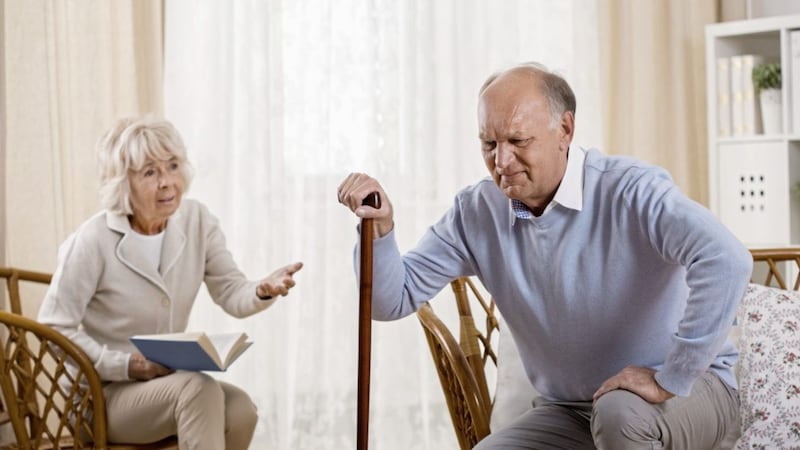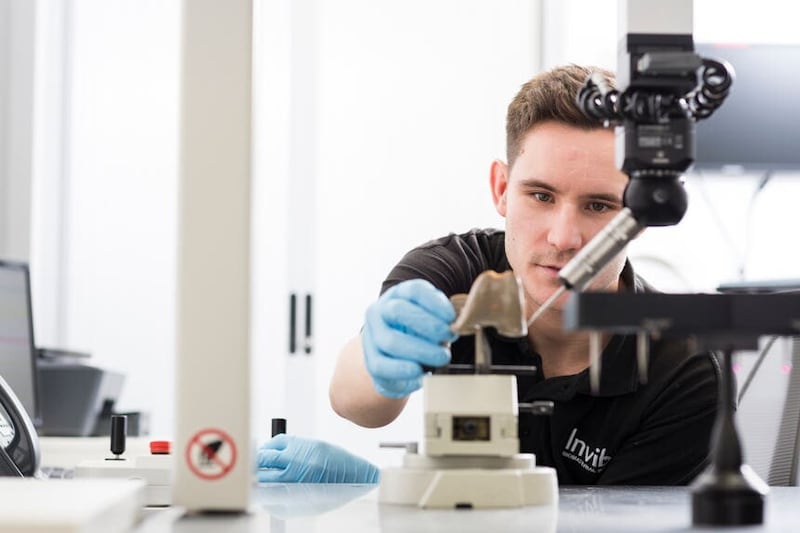THAT old saying ‘There’s always someone worse off than yourself’ comes to mind when you suffer aches and pains, sleepless nights or a broken heart but your own problems are your own problems and have to be addressed.
Take rheumatism for instance, an out-of-date name although most of us use it when we get ‘rheumaticky’ but times have moved on and although we still have rheumatologists dealing with conditions affecting the muscles, the connecting tissues and joints, medicine is now able to focus more accurately, for instance on osteoarthritis and rheumatoid arthritis, conditions with some common symptoms but different and specific treatments.
Osteoarthritis is one of the most common forms of arthritis and can affect young and old. 'Wear and tear’ of the joints seems to be a catch-all when you go to the doctor. You know the feeling, as if bones are rubbing together, painful after a day on your feet, better in the morning after a rest.
Rheumatoid arthritis is common but different. It’s an autoimmune disease where the body attacks its own tissues, in this case the attack is mainly on joints – that's it in layman’s language – so it’s vitally important to visit your GP to discuss your symptoms as obviously you want the best answer for your condition.
Sometimes it’s fairly straightforward, sometimes it’s a much more serious situation.
Take Jane (not her real name). She suffers rheumatoid arthritis.
“I’d no aches or pains before it happened. I was on holiday in Vienna, in a fabric shop, standing at the top of the stairs when all of a sudden I simply couldn’t walk, I couldn’t take a step because my feet were so sore. Eventually we got to the hotel but the pain spread and got worse before it got better, I couldn’t dress myself, a couple of times I couldn’t even pull down my pants to go to the toilet. Thank goodness I was with family.”
When she came home she went straight to the doctor and after blood tests he said: "Sorry to tell you, you’ve rheumatoid arthritis. This is an acute case but aren’t you glad you didn’t get it when you were younger?"
She was in her 60s at the time.
Jane learned about the disease, how it effects her joins, shoulders, hips, elbows, fingers, even the balls of her feet.
“Pain makes me very tired; after a wedding in Dublin I had to get someone to come and pack my case I was so weak, I couldn’t do it. One day I got into the bath but couldn’t get out. My body wouldn’t do what I told it, my knees were too painful to kneel. Eventually I reached a towel, wrapped it round the taps and heaved myself up. It was frightening.”
Now she has a shower and various devices to help her dress, the most useful a stick with a hook at one end to help pull up and over. Even a coat hanger can be adapted for this.
It’s important to say that since her diagnosis, Jane has other illnesses which contribute to her difficulties but her joints still cause her most pain and anxiety.
To control her condition she injects herself once a week with the drug methotrexate, which helps – at least she can move around more freely and is able to drive as usual with a few modifications like a cover on the steering wheel for better grip.
Fifteen years after diagnosis she says she tries not to get depressed.
“There’s no point in telling me to take exercise: I can’t. When I tell people I’m tired they think I’m lazy and it hurts. I’m missing out on a lot of things. The world is closing in.”
As in all cases, Jane’s condition is unique to her but she has found help and says it’s vital to get medical advice and to make life as easy as possible. That includes practical advice with everyday living.
I researched this some years ago for a television programme and here are some of the ideas. A basket below the letterbox so you don’t need to bend for the post, electric sockets at waist level or extension leads set on a raised surface.
Fit lever-type door handles rather than round ones – easier to grip – and for a mortice-lock key, inserting a piece of wood or metal (a large nail, for example) through the hole in the key allows you to turn it more easily.
A double banister, grab rails, both inside the house and outside. Have your own special chair, right height and correct upholstery, arm rests to give you support to push against when getting up, slip-on shoes and a long shoehorn; a raised seat at the toilet is essential, as is a grab rail to steady yourself.
I can’t understand why toilets aren’t higher as standard, sometimes it’s like you’re never going to land!
An adjustable table for reading or writing, a pen wrapped round with a piece of material secured with a few stitches makes for an easier grip and there’s a non-slip fabric on the market that sticks to surfaces – comes both in a roll and cut to size.
Long ‘pick-up’ grips are handy. Mine has a magnetic tip which is most useful. Good for drawing curtains too – cuts down stretching. Sling a shoulder bag across your chest and use it to carry everything from a bottle of milk to your hot water bottle to keys and purse.
Shopping is much easier today: you can ring in your order and it will be delivered; some delivery drivers are willing to put items in cupboards. Check this out.
Cut down effort in the bedroom by lying on a duvet and covering yourself with a duvet, no painful tucking in of sheets under the mattress.
A lot of these ideas will be helpful to all of us, especially the elderly, but if you are diagnosed you will be directed to professional help and practical advice from social services.









